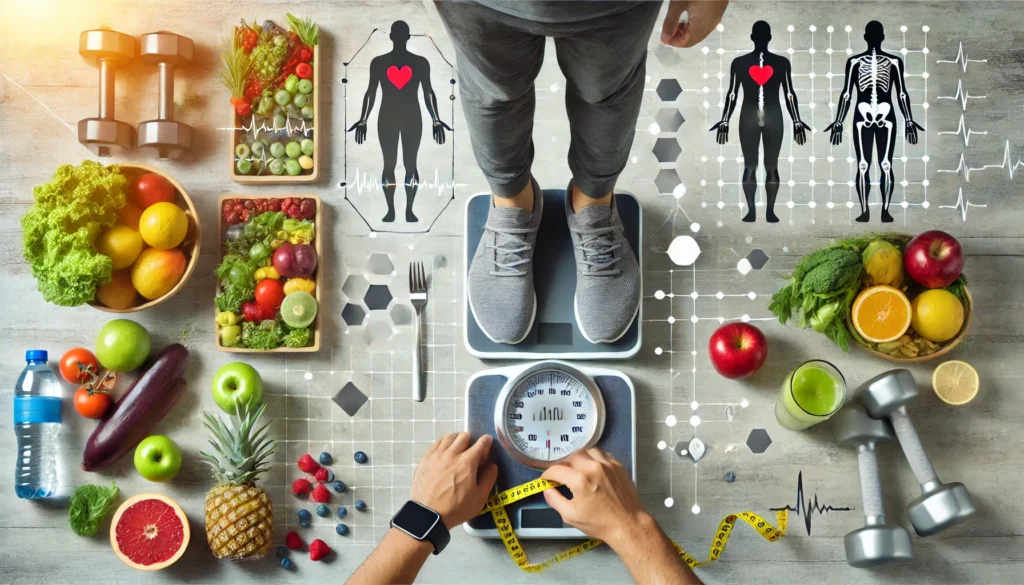How to Get Fit 2024
You are getting fit, which starts with assessing your fitness level through simple tests like resting pulse rate and pushups. Set realistic, SMART goals to guide your journey. Choose enjoyable activities that combine cardio, strength training, and flexibility exercises. Aim for 150 minutes of moderate or 75 minutes of vigorous aerobic activity weekly, plus two days of strength training. Create a balanced workout plan that gradually increases intensity and includes warm-ups and cool-downs. Track your progress regularly, adjusting your routine as needed. Celebrate small victories to stay motivated. By following these steps, you’ll be well on your way to achieving your fitness goals.
Key Takeaways
– Assess your fitness level through simple tests like resting pulse rate and pushup count.
– Set realistic, SMART fitness goals that are challenging yet achievable.
– Choose enjoyable exercise activities that combine cardio, strength training, and flexibility work.
– Create a balanced workout plan with 150 minutes of moderate aerobic activity weekly and strength training twice weekly.
– Track your progress regularly and adjust your plan to maintain motivation and prevent plateaus.
Assess Your Current Fitness Level

Assessing your current fitness level is crucial before embarking on a fitness journey. This assessment provides a baseline for tracking progress and helps tailor your workout routine to your needs.
To begin with, measure your resting pulse rate, which offers insight into your overall cardiovascular health. Then, record your post-exercise pulse rate after completing a one-mile walk, which indicates your cardiovascular endurance.
To gauge your aerobic fitness, time yourself for a 1-mile walk or a 1.5-mile run. A good fitness level is typically indicated by completing the walk in 12-15 minutes or the run in 10-12 minutes.
Count the standard or modified pushups you can perform in one set for upper body strength and endurance.
Body composition is another critical aspect of fitness. Measure your waist circumference above the hip bones. For women, a measurement above 35 inches and for men above 40 inches may indicate potential health risks.
Regular assessments every six weeks are essential for tracking progress and adjusting your fitness program. These periodic check-ins allow you to evaluate your current routine’s effectiveness and identify areas for improvement.
Set Realistic Fitness Goals
Setting realistic fitness goals is a cornerstone of any successful fitness journey. To effectively guide your progress, you must define specific, measurable, achievable, relevant, and time-bound (SMART) objectives that align with your current fitness level and aspirations.
Begin by establishing small, attainable targets that gradually increase in difficulty. For instance, start with a goal of walking 10 minutes daily, then progressively work towards 30-60 minutes of moderate activity. This approach enhances motivation and reduces the risk of burnout, ensuring long-term adherence to your fitness routine.
Aim for a balanced exercise regimen incorporating 150 minutes of moderate aerobic or 75 minutes of vigorous activity weekly, complemented by two days of strength training for major muscle groups. This combination promotes overall health and physical fitness.
Consider keeping a fitness journal to maintain accountability and track your progress. This tool allows you to record your workouts, identify achievements, and pinpoint areas for improvement. Additionally, celebrating small victories, such as completing a challenging exercise or reaching a specific step count, reinforces positive behavior and sustains enthusiasm for your fitness journey.
Remember that progress takes time, and adjusting your goals as you advance is crucial. Regularly reassess your objectives to ensure they remain challenging yet achievable.
Choose Suitable Exercise Activities

Selecting suitable exercise activities is crucial for developing a sustainable fitness routine that aligns with your interests and goals. To ensure long-term fitness success, choose activities that you enjoy, as this increases adherence and motivation. Incorporate a mix of aerobic exercises, strength training, and flexibility exercises to create a balanced workout regimen.
Consider options like walking, cycling, or swimming for aerobic activities. These exercises improve cardiovascular health and endurance. Aim for at least 150 minutes of moderate-intensity or 75 minutes of vigorous-intensity aerobic activity each week.
Strength training is equally essential for overall health and should be performed at least twice a week. It should target major muscle groups, including weight lifting, bodyweight exercises, or resistance band workouts.
Incorporate flexibility and balance exercises such as yoga or tai chi into your routine to enhance mobility and prevent falls, especially for older adults. These activities improve posture, reduce the risk of injury, and promote relaxation.
Experiment with different exercise formats to find what works best for you. Group classes can provide social support and motivation, while outdoor activities offer a change of scenery and fresh air. Home workouts can be convenient for those with busy schedules or limited access to fitness facilities.
Remember to listen to your body and adjust your routine as needed. Gradually increase the intensity and duration of your workouts to prevent burnout and promote continuous progress.
Create a Balanced Workout Plan

Once you’ve identified suitable exercise activities, the next step is to create a balanced workout plan that maximizes your fitness potential. A well-rounded approach should incorporate exercises to ensure overall fitness and prevent boredom. Aim for at least 150 minutes of moderate aerobic or 75 minutes of vigorous activity each week, complemented by strength training for all major muscle groups on two or more days.
Your balanced workout plan should include cardio, strength training, flexibility, and balance exercises. This diverse approach promotes comprehensive fitness and helps maintain motivation. Integrate warm-up and cool-down sessions into your daily routine to prepare your body for exercise and facilitate recovery, reducing the risk of injury.
As you progress, gradually increase workout intensity by no more than 10% per week. This steady progression helps avoid injury while ensuring continuous improvement toward your fitness goals. Remember to regularly assess and adjust your workout plan every six weeks based on your progress and evolving fitness levels.
To create an effective plan, consider alternating between different types of exercises throughout the week. For example, you might engage in cardio activities on Mondays, Wednesdays, and Fridays while focusing on strength training on Tuesdays and Thursdays.
Incorporate flexibility exercises, such as yoga or stretching, into your cool-down sessions or as standalone workouts.
Track Progress and Adjust

A fitness journey without tracking is like sailing without a compass. To ensure you’re moving in the right direction and making progress, it’s essential to regularly assess your fitness levels and adjust your workout plan accordingly.
Start by establishing a baseline for your current fitness level. Then, every six weeks, track key metrics such as pulse rate, time for walking or running specific distances, and the number of pushups you can complete. These assessments will help you identify improvements and areas that need more focus in your fitness program.
As you progress, gradually increase the intensity of your workouts, but do so cautiously. A good rule of thumb is to increase intensity by at most 10% weekly. This approach helps prevent injury and ensures continued progress without plateauing.
Utilize fitness apps or trackers to monitor your daily activity levels and calories burned. These tools provide valuable insights into your progress and can help you set realistic future goals.
Additionally, incorporate benchmarking tests like timed 1-mile walks or strength assessments to regularly evaluate your performance and make informed adjustments to your fitness program.
Remember to celebrate small victories and milestones along your fitness journey. These celebrations help maintain motivation and provide opportunities to reflect on your progress.
Use this information to make necessary adjustments based on your evolving fitness levels and personal goals.
Frequently Asked Questions
What Is the Fastest Way to Get Fit?
The fastest way to get fit combines high-intensity interval training (HIIT) and strength training.
Engage in at least 150 minutes of moderate-intensity or 75 minutes of vigorous-intensity aerobic exercise weekly, along with resistance training twice weekly.
Aim for 30-60 minutes of exercise most days, maintaining consistency for 4-8 weeks to see noticeable results.
Support your fitness journey with proper nutrition, including a balanced diet rich in whole foods and adequate protein intake.
How Do I Start Getting Fit?
To start getting fit, begin with a gradual approach. Set realistic goals and establish a consistent exercise routine that includes aerobic activities, strength training, and flexibility exercises.
Aim for at least 150 minutes of moderate-intensity weekly exercise, such as brisk walking or cycling. Use fitness apps or trackers to monitor progress and stay motivated.
Incorporate warm-up and cool-down periods, and prioritize rest days for recovery. Remember to consult a healthcare professional before starting any new exercise regimen.
How Long Does It Usually Take to Get Fit?
The timeline for getting fit varies depending on individual factors and goals. Changes can be noticed within two weeks of consistent exercise as the body adapts to new activities.
Physical changes, such as improved muscle tone, typically become evident around 4-6 weeks. Significant improvements in overall fitness, including strength and endurance, can be achieved within three months of dedicated training.
Maintaining a consistent routine and incorporating rest days are crucial for long-term fitness success.
How to Get Fit in 30 Days?
To get fit in 30 days, start with a structured routine of 150 minutes of moderate-intensity aerobic activity and two strength training sessions weekly.
Set achievable goals, like increasing daily steps by 1,000 each week. Gradually intensify workouts by 10% weekly to avoid injury.
Incorporate diverse activities to maintain engagement. Track progress using a fitness journal or app, monitoring pulse rate, endurance, and strength gains.
Adjust your plan as needed for optimal results.
Conclusion
Achieving fitness requires a systematic approach encompassing assessment, goal-setting, and activity selection. A balanced workout plan incorporating aerobic, strength, and flexibility exercises is essential. Regular progress tracking allows for necessary adjustments. Consistency and dedication are critical to long-term success. Implementing these strategies and maintaining motivation through various techniques can improve individuals’ physical health and overall well-being. With proper guidance and commitment, attaining desired fitness levels is an achievable goal for everyone.

